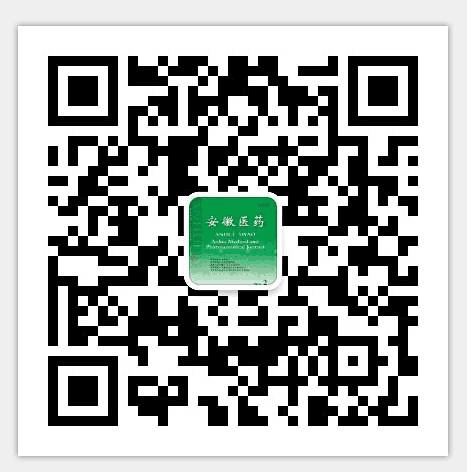| 赵丹,兰永青,蒲玲莉,等.突发事件下精神科医护人员应对方式的影响因素分析与预测模型[J].安徽医药,2025,29(6):1175-1180. |
| 突发事件下精神科医护人员应对方式的影响因素分析与预测模型 |
| Factors affecting the coping styles of psychiatric medical staff during critical incidents and the establishment of their prediction models |
| |
| DOI:10.3969/j.issn.1009-6469.2025.06.022 |
| 中文关键词: 突发事件 精神病科,医院 医护人员 应对方式 多因素分析 列线图模型 |
| 英文关键词: Critical incident Psychiatric department, hospital Healthcare workers Coping styles Multifactorial analysis Columnar graphical model |
| 基金项目:2023年度四川省基层卫生事业发展研究中心资助项目( SWFZ23-Y-58) |
|
| 摘要点击次数: 42 |
| 全文下载次数: 15 |
| 中文摘要: |
| 目的分析突发事件下精神科医护人员应对方式影响因素,建立预测模型并进行验证。方法 2022年 10月至 2023年 11月选择四川省 20家医院经历过突发事件的 392名精神科医护人员作为研究对象。研究对象以 7∶3比例分为模型组 274名,验证组 118名。收集可能影响突发事件下精神科医护人员应对方式的相关因素,根据应对方式不同将模型组分为积极应对组与消极应对组,比较两组各影响因素,以 LASSO回归筛选潜在变量后行多因素 logistic回归获得独立影响因素后建立列线图模型,并进行验证。结果模型组 274名精神科医护人员中 36名( 13.14%)在突发事件下采取消极应对方式。多因素分析结果显示:性别、职称、聘用形式、独生子女、月夜班次数、职业倦怠情况为突发事件下精神科医护人员应对方式的独立影响因素(P<0.05)。模型验证结果显示,区分度:模型组 ROC曲线下面积为 0.87,95%CI为( 0.80,0.93)灵敏度为 91.7%,特异度为 67.2%;验证组 AUC为 0.79,95%CI为( 0.71,0.86)灵敏度为 69.4%,特异度为 75.6%。准确度:模型与验证组校准曲线斜率为 1,截距为<0.001,模型曲线与理想模型基本拟对角线。临床有效性分析结果显示当预测概率阈值为 0.10~0.77时使用该研究模型的净获益最高。结论突发事件下精神科医护人员应对方式受性别、职称、聘用形式、独生子女、月夜班次数、职业倦怠情况组,合成,的影响,该研究建立的模型可用于预测突发事件下精神科医护人员应对方式。 |
| 英文摘要: |
| Objective To analyze the factors affecting the coping styles of psychiatric healthcare workers during critical incidents, toestablish a prediction model and to validate it. Methods A total of 392 psychiatric healthcare workers, who experienced critical inci-dents in 20 hospitals of Sichuan Province from October 2022 to November 2023, were selected as study subjects. The study subjectswere assigned into a model group (n=274) and a validation group (n=118)in a 7∶3 ratio. We collected relevant factors that may affectthe coping styles of psychiatric healthcare workers during critical incidents, assigned the model group into a positive coping group anda negative coping group according to the different coping styles, compared the influencing factors between the two groups, and estab-lished a nomogram model after screening potential variables by LASSO regression and identifying the independent influencing factorsusing multivariable logistic regression, as well as carried out data validation.Results 36 (13.14%) out of 274 psychiatric healthcareworkers in the model group responded negatively during critical incidents. The results of multivariable analysis showed that gender, pro-fessional title, form of employment, the only child, number of night shifts per month, and burnout status were independent factors for thecoping styles of psychiatric healthcare workers in the context of emergencies (P<0.05). The results of model validation showed the fol-lowing: As for differentiation, the area under the ROC curve (AUC) in the model group was 0.87, with a 95% CI of (0.80, 0.93), a sensi-tivity of 91.7%, and a specificity of 67.2%; the AUC in the validation group was 0.79, with a 95% CI of (0.71, 0.86), a sensitivity of69.4%, and a specificity of 75.6%. As for accuracy, both the model and validation groups had a calibration curve slope of 1 and an in-tercept lower than 0.001, and the model curve coincided with the diagonal line, indicating agreement with the ideal model. The resultsof the clinical effectiveness analysis showed that the study model achieved the highest net benefit at prediction probability thresholdsranging from 0.10 to 0.77.Conclusion Psychiatric healthcare workers' coping styles during critical incidents are influenced by factorssuch as gender, professional title, form of employment, the only child, number of night shifts per month, and burnout status, and the model developed in this study can be used to predict psychiatric healthcare workers' coping styles during critical incidents. |
|
查看全文
查看/发表评论 下载PDF阅读器 |
| 关闭 |
|
|
|


